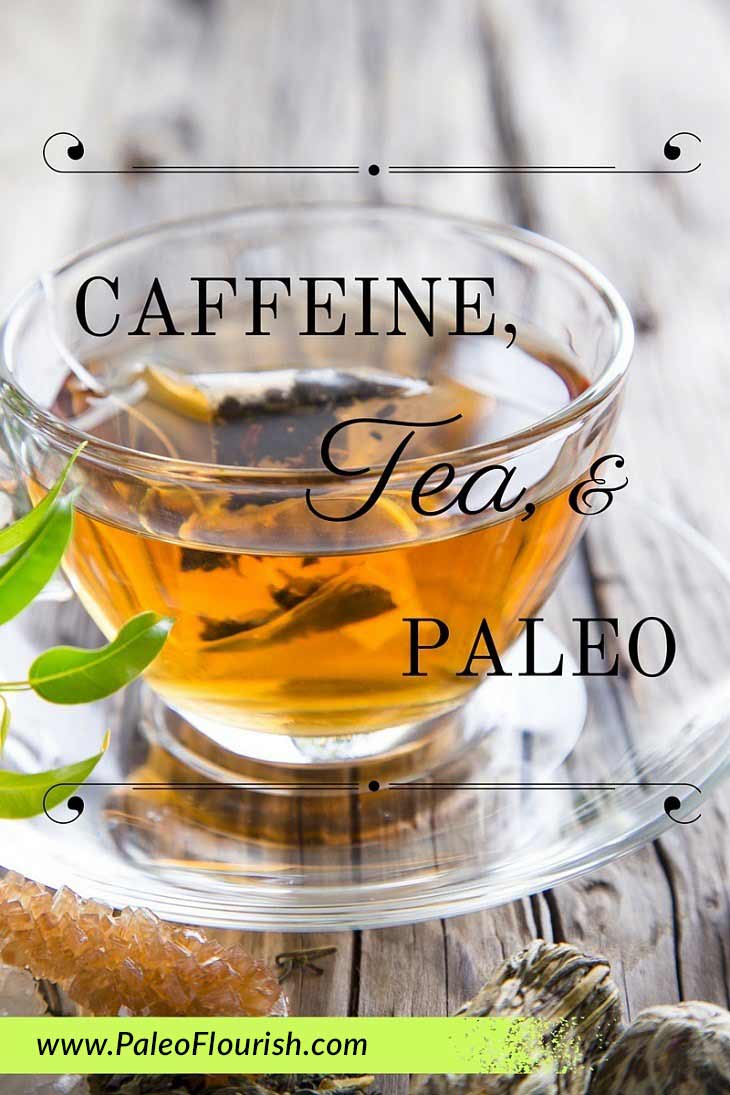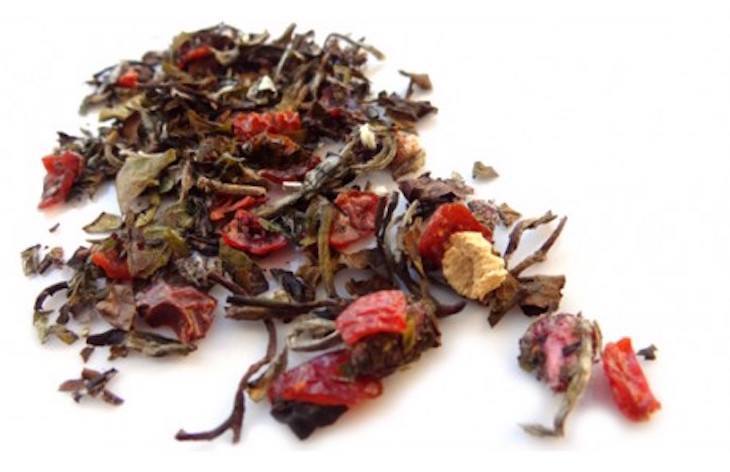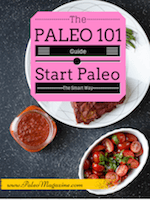Caffeine, Tea, and Paleo

This guest post is by Will from California Tea House. If you’re looking for some new teas to try, then why not give his favorites a try – the Fruity Dream is a blend of hibiscus blossoms, rose hip peels, apple preserves, kiwi bits, strawberry slices, elderberries, citrus peels, strawberries, marigold and cornflower blooms and apricots, and the Pomegranate Peony is a one of a kind blend of pomegranate preserves, rose-hips and stevia blended with the finest grade of white peony tea.
If you’re interested in buying some tea from California Tea House, then use this coupon code, PALEO10, to get 10% off plus free shipping.

The Caffeine Debate
The question of whether or not caffeinated beverages are allowed in a paleo diet is a topic of hot debate all across the community.
One side insists that caffeine wouldn’t have been a part of the diet of our Paleolithic ancestors — and that alone should be enough reason to forego tea.
Another side argues that stimulants like caffeine have actually been used since the stone age (paleolithic era), when early humans ate seeds, leaves, and tree bark to helped them fight fatigue. Others believe that while it isn’t a part of the paleolithic era diet, its health benefits make it a good idea to be integrated into their diet anyway.
Tea Is Healthy
Paleo is all about getting healthy, and tea is one of the healthiest drinks around. It’s quick to make, has less caffeine than coffee, and is naturally calorie and sugar-free. Plus, it comes in tons of varieties. With a little searching, everybody can find something they love.
Tea has been used for almost five thousand years, originating in China and spreading throughout the West. In early times, it was often used as a medicine, and it’s valued today for its antioxidant and antimicrobial properties.
Which Tea Should You Choose?
If you’re considering including tea in your paleo diet, how should you choose which one to include in your individual nutritional approach?
First, let’s look at some background on the main categories of tea. All tea comes from the Camellia sinensis, which grows in China and India. For true tea connoisseurs, tea can be divided into green, black, oolong, and white teas. Technically, all of these teas are processed (some more than others), so you need to weigh the pros and cons of this for yourself and come to a decision that’s right for you.
Of the four tea categories above, white tea is considered the least processed as its leaves are just picked and dried, without being fermented or cured. White tea has particularly powerful anticancer properties. Green and oolong teas are lightly processed.
Green tea has been shown to help with preventing cancer growth and reducing artery clogging. It also reduces the risk of Alzheimer’s and Parkinson’s.
Black teas, made from fermented leaves, are the most processed and contain the most caffeine of the four main tea types. Some studies indicate that black tea may help prevent strokes and may have a protective effect against the lung damage caused by cigarette smoke.
If you’d like to try these teas, all of them come in organic, caffeinated, and caffeine-free varieties (containing only small traces of caffeine), making it simple to find something that suits your personal Paleo approach.
But if none of the teas above appeal to you, don’t worry! The world of tea is diverse and growing, with new flavor combinations being invented every day!
Caffeine-Free Teas
Though they aren’t from the Camellia sinensis shrub, herbal teas, or “tisanes” are almost always caffeine-free. They’re made by infusing plants, herbs, or spices in hot water. Popular varieties of herbal tea include South African rooibos (sometimes called “red tea” in the U.S.), chamomile, ginseng, hibiscus, lemon, mint, and licorice root.
Like teas from the Camellia sinensis plant, herbal teas also boast several health benefits. In fact, in China, Sri Lanka, and India, herbal teas are still used in traditional medicine. In America, they’re often called “detox” teas and are used in “tea cleanses.”
Chamomile tea is often used to aid sleep and soothe an achy stomach, while rooibos contains as many antioxidants as traditional tea, without any of the caffeine. Hibiscus tea can help lower high blood pressure.
With all of its health benefits, tea is definitely a great addition to the Paleo diet. From traditional tea to tisanes, caffeinated to caffeine-free, and dried to fermented, there is a tea for each and every Paleoist who wants to add tea to their diet.
Good luck in finding your perfect tea!
There is a comprehensive terms and conditions page (here) that covers this entire website and every post/article/recipe/statement etc. within, and you can always access that page from the bottom of every page. But here is a short version.
NOTICE AND DISCLAIMER: Information contained in this article is not intended to and shall not convey or recommend any medical or nutritional advice or course of action. Any course of action you undertake should be discussed with your doctor or other licensed medical professional. All opinions expressed in this article are based solely on personal experiences and research. I am NOT a licensed doctor, dietitian, or nutritionist.
Images: Copyright (c) Lukas Gojda from Fotolia

